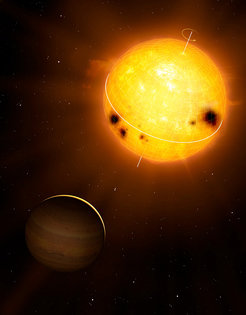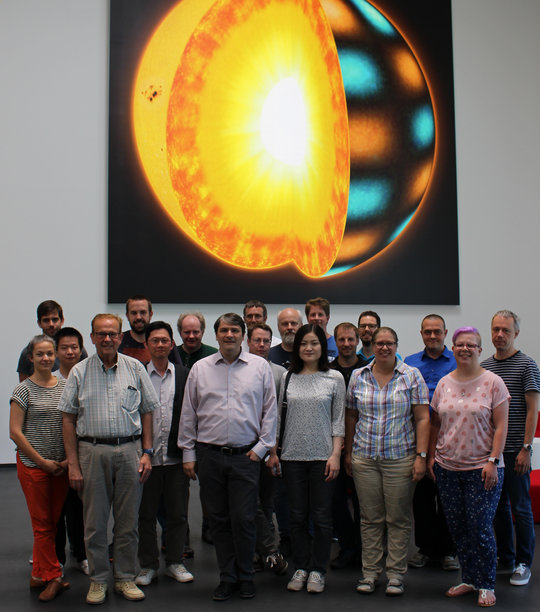.
20.02.2014
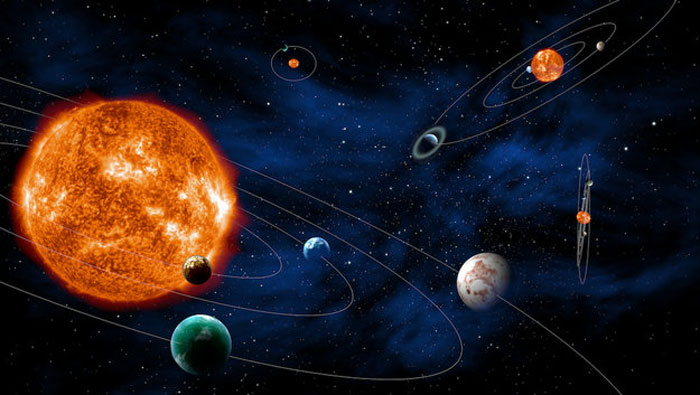
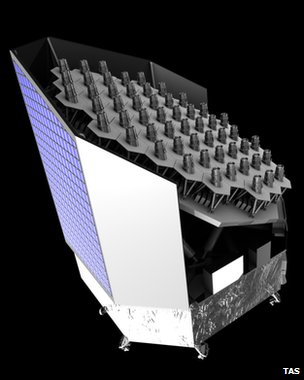
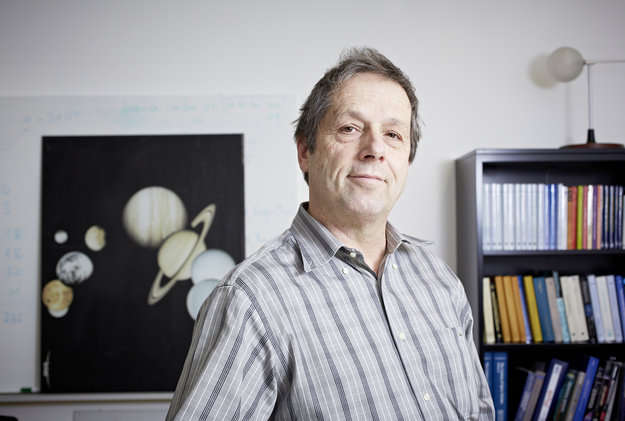
Mit der Entscheidung für PLATO setzt die ESA auf eine weitere Mission zur Erforschung der Planeten ferner Sonnen. Willy Benz von der Universität Bern erklärt, was die Experten sich von den neuen Exoplaneten-Satelliten erhoffen.
Herr Benz, fast täglich melden die Medien neue Erkenntnisse über die Exoplaneten. Nun hat die ESA mit der Entscheidung für PLATO (PLAnetary Transits and Oscillations of stars) binnen kurzer Zeit die zweite Mission zu dieser Thematik aus der Taufe gehoben. Wieso diese geballte Anstrengung, um ferne Planeten zu untersuchen?
Wir wissen noch viel zu wenig über diese extrasolaren Planeten. Zwar wurden in den vergangenen zwei Jahrzehnten 1077 von ihnen gefunden, hinzu kommen einige Tausend Kandidaten, die noch bestätigt werden müssen. Das ist zweifellos ein großer Gewinn, verglichen mit der Zeit vor der ersten Entdeckung, also vor 1995. Wir verdanken dies sowohl Beobachtungen vom Boden aus, als auch Weltraum-gestützten Observatorien wie COROT oder Kepler. Doch trotz dieser beeindruckenden Zahlen: Unsere Kenntnisse zur physischen Natur dieser faszinierenden Planeten sind gering. Mit den neuen Missionen wollen wir sie näher kennen lernen.
Nehmen Sie die Mission CHEOPS, das steht für CHaracterizing ExOPlanet Satellite. Es ist ein kleiner Satellit, er wiegt nur 250 Kilogramm. Ab dem Jahresende 2017 wird er bis zu 800 Kilometer hoch um die Erde kreisen und dort für dreieinhalb Jahre gezielt bereits bekannte Planeten und Planeten-Kandidaten von etwa 700 vergleichsweise hellen Sternen ins Visier nehmen.
Dazu ist ein Fernrohr mit 33 Zentimetern Öffnung an Bord. Es späht nach kurzen Verdunklungen, die sich ergeben, wenn der Exoplanet vor seinen Heimatstern tritt und ein wenig von dessen Licht verdeckt. Mit solchen Transits können wir den Durchmesser der Exoplaneten bestimmen. Weitere Informationen kommen von irdischen Sternwarten: Dort misst man mittels der Radialgeschwindigkeitsmethode auch ihre Masse. Diese Methode nutzt den Rütteleffekt, den ein Exoplanet mit seiner Schwerkraft bei seinem Heimatstern bewirkt.
Durchmesser und Masse zusammen liefern uns schließlich die mittlere Dichte der Exoplaneten. Das ist ein wichtiger Wert für ihrer Charakterisierung, denn er zeigt an, ob der Planet aus Gestein, Eis oder Gas besteht und wie seine Atmosphäre beschaffen ist. Ohne diese Informationen sind kaum Aussagen über die potentielle Lebensfreundlichkeit eines Planeten möglich. Allerdings sind die meisten Sterne, bei denen COROT und Kepler Planeten fanden, für präzise Messungen der Radialgeschwindigkeiten zu dunkel.
Das ist der Grund, warum es bei den interessanten Exoplaneten mit kleinen Massen nur wenige gibt, deren Dichte bekannt ist. Weil wir uns bei CHEOPS und PLATO auf relativ helle Sterne konzentrieren, können wir einen Schritt weiter gehen.
Alfa Centauri ist extrem hell, der vierthellste Stern am gesamten Himmel. Mit CHEOPS nehmen wir uns typischerweise Sterne vor, die gerade noch mit bloßem Auge erkennbar oder sogar noch etwas dunkler sind – dafür sind die Sensoren ausgelegt. Deshalb erschwert die starke Strahlkraft von Alfa Centauri die Beobachtung von dessen Planeten. Wir werden uns trotzdem bemühen, auch wenn es schwierig wird.
PLATO ist nicht nur von seiner Masse her gewichtiger als CHEOPS. Als 'M-Klasse-Mission', also als mittel-großes ESA-Projekt, ist es auch finanziell deutlich umfangreicherer, und wissenschaftlich viel anspruchsvoller. Spätestens ab 2024 werden die Beobachtungen damit beginnen. Der Satellit hat 34 kleine Fernrohre, die jeweils mit einer Weitwinkeloptik die helleren Sterne auf einem relativ großen Himmelsausschnitt im Auge behalten, ebenfalls mit der Transit-Methode.
Geleitet wird die Mission von Heike Rauer vom Deutschen Zentrum für Luft- und Raumfahrt in Berlin. PLATO wird, anders als CHEOPS, nicht bereits bekannte Exoplaneten charakterisieren, sondern Tausende heute noch unbekannte Exemplare entdecken und untersuchen.
Beiden europäischen Missionen ist gemeinsam, dass sie für Planeten maßgeschneidert sind, die erdähnliche Durchmesser haben. Insbesondere PLATO ist für Planeten mit längeren Umlaufzeiten um ihre jeweiligen Zentralsterne zuständig, vergleichbar unserer Erde.
Gedanklich sind wir schon einen Schritt weiter: Die übernächste Generation von Teleskopen wird es ermöglichen, mittels Spektralanalysen die Erforschung der Exoplaneten enorm zu beflügeln. Dann werden wir viel mehr über deren chemische Zusammensetzung, das Klima und die Lebensbedingungen für mögliche Organismen dort erfahren. CHEOPS und PLATO haben die Aufgabe, die Himmelsobjekte zu finden, die wir dann eingehend studieren werden.
Quelle: ESA
.
Update: 11.07.2014
.
EXOPLANETEN MISSION CHEOPS ERREICHT WICHTIGE MEILENSTEINE AUF DEM WEG ZUM START IM JAHR 2017
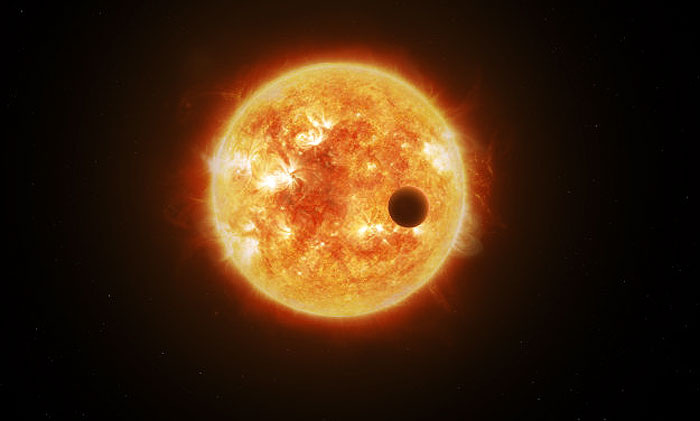
Künstlerische Impressionen von einem Planeten, der an einem Stern vorbeizieht
.
Die erste kleine Mission der ESA im Rahmen des Wissenschaftsprogramms ist bereit für die Bauphase. Die Implementationsphase hat begonnen, der Satellit wechselte demnach in weniger als 18 Monaten von der Auswahl- in die Umsetzungsphase.
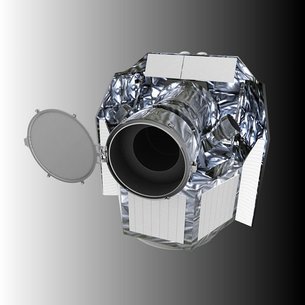
Auf der Suche nach einer zweiten Erde: Grünes Licht für PLATO-Mission
Die Exoplaneten-Mission der ESA kann mit der technischen Umsetzung beginnen. Der Start ist für 2026 geplant.
Mehrere Tausende von Exoplaneten, die entfernte Sterne umkreisen, sind bisher bekannt. Viele von ihnen wurden von den Raummissionen Kepler und CoRoT entdeckt. Allerdings sind diese Welten so weit weg und ihre Zentralsterne so lichtschwach, dass sie sich nicht im Detail charakterisieren lassen. PLATO wird die erste Exoplaneten-Mission sein, die vergleichsweise nahe, erdähnliche Planeten entdecken und beschreiben kann.
Da PLATO in seiner mindestens vierjährigen Missionsdauer einen großen Ausschnitt des Himmels vermessen wird, kann die Mission die ganze Vielfalt der Sterne und Planetensysteme in unserer galaktischen Nachbarschaft studieren. „Mit der Beobachtung stellarer Vibrationen wird PLATO erstmals diese Sterne und ihre Planeten in Bezug auf Masse, Radius und Alter vollständig charakterisieren", sagt Prof. Dr. Laurent Gizon, Geschäftsführender Direktor des MPS und Leiter des PLATO Data Centers. „Dies wird unser Wissen über die Evolution von Exoplaneten und ihrer Zentralsterne revolutionieren“, fügt er hinzu. Das spannendste Ziel der Mission ist es, einen Erdzwilling zu finden.
„Wir freuen uns sehr, dass PLATO nun diesen nächsten Meilenstein erreicht hat und in die nächste entscheidende Phase eintritt", so Gizon. In den vergangenen drei Jahren seit der Auswahl der Mission haben Wissenschaftler der ESA, des DLR (Berlin), des MPS und anderer europäischer Partnerinstitutionen die technischen und programmatischen Details der Mission festgelegt. Mit der heutigen Entscheidung kann die Umsetzung – die technische Implementierung und der Bau der Raumsonde und seiner Instrumente ? beginnen. Parallel dazu wird die Software zur Analyse der Beobachtungen am PLATO Data Center entwickelt.
Die Instrumentierung von PLATO besteht hauptsächlich aus 26 Teleskopen. Dadurch ist es möglich, eine sehr große Fläche des Himmels zu überblicken. PLATO misst, wie die Helligkeit eines Sterns abnimmt, wenn ein Planet an ihm vorüberzieht, so genannte Transite. Um möglichst zwei solcher Transite ein und desselben Exoplaneten zu dokumentieren, blickt die Raumsonde bis zu zwei Jahre auf denselben Himmelsausschnitt. „Mit diesem Konzept und der hohen Empfindlichkeit des Instruments werden wir Gesteinsplaneten um sonnenähnliche Sterne finden und hochgenau charakterisieren können“, versichert Missionsleiterin Prof. Dr. Heike Rauer vom DLR.
Die Beobachtungsdaten werden am PLATO Data Center verarbeitet, das aus mehreren Einheiten in ganz Europa und einer zentralen Datenbank am MPS in Göttingen besteht. Die MPS-Wissenschaftler rechnen damit, am Ende der Mission mehrere Petabyte an wissenschaftlichen Daten zu verwalten. Mit Unterstützung der Deutschen Raumfahrtagentur (DLR Raumfahrt-Agentur in Bonn) beginnt das PLATO Data Center nun, Software zu entwickeln, mit der sich die wissenschaftlichen Daten aufbereiten und weiterverarbeiten lassen.
Quelle: MAX-PLANCK-GESELLSCHAFT, MÜNCHEN
---
Update: 6.10.2018
.
CONSTRUCTION OF EUROPE'S EXOPLANET HUNTER PLATO BEGINS
The construction of ESA's Plato mission to find and study planets beyond our Solar System will be led by Germany’s OHB System AG as prime contractor, marking the start of the full industrial phase of the project.
The announcement was made today at the 69th International Astronautical Congress in Bremen, Germany, where the contract was formally signed.
The contract covers the delivery of the satellite, including the testing phase leading to launch, support during the launch campaign, and the in-orbit commissioning phase.
Plato, the PLAnetary Transits and Oscillations of stars mission, will be launched in 2026 to find and study extrasolar planetary systems, with a special emphasis on rocky planets around Sun-like stars and their habitable zone – the distance from a star where liquid water can exist on a planet’s surface.
“Does a second Earth exist in the Universe? is one of the exciting questions in astrophysics today,” says Johann-Dietrich Wörner, Director General of ESA.
“With our Plato satellite we are focusing on Earth-like planets orbiting up to the habitable zone around other stars which are similar to our Sun. This will be a major step towards finding another Earth.”
The spacecraft will be built and assembled by OHB together with Thales Alenia Space (France and the UK) and RUAG Space Switzerland; many ESA member States will also be involved in the construction of this European planet hunter.
The German Aerospace Center (DLR) and a consortium of various European research centers and institutes will provide the scientific instrument, consisting of an array of 26 cameras and electronic units, that will observe a large patch of the sky on the lookout for planets.
“Plato is a next-generation exoplanet mission that will monitor thousands of bright stars over a large area of the sky in search of tiny, regular dips in their brightness caused by transiting planets,” says Ana Heras, Plato project scientist at ESA.
“Since planets only block a minute portion of the light radiated by their parent star, this quest requires extremely precise, long-term photometric observations.”
Plato will not only seek new planets but will also investigate the properties of their host stars, and determine the planetary masses, sizes and ages with unprecedented accuracy. This will help scientists understand the architecture of exoplanet systems and determine whether they might host habitable worlds. In addition, Plato will also perform asteroseismology – the study of seismic activity of stars – providing insight into stellar interiors and evolution.
The mission will expand on the work of Cheops, ESA’s upcoming exoplanet watcher, which will be launched next year to perform a first characterisation of known planets. It will be followed by Ariel, scheduled for launch in 2028, which will observe a large and diverse sample of exoplanets to study their atmospheres in great detail.
Plato will operate from the 'L2' virtual point in space 1.5 million km beyond Earth as seen from the Sun. From this vantage point, it will be our outpost to unravel the mysteries of a multitude of extrasolar worlds.
“We are pleased to kick off construction of this exciting mission,” says Filippo Marliani, ESA's Plato Project Manager.
“With the prime contractor and the support of European space industry, we are looking forward to building a spacecraft that will tackle some of humankind’s most profound questions.”
Quelle: ESA
----
Update; 8.03.2021
.
Planet-hunting eye of Plato
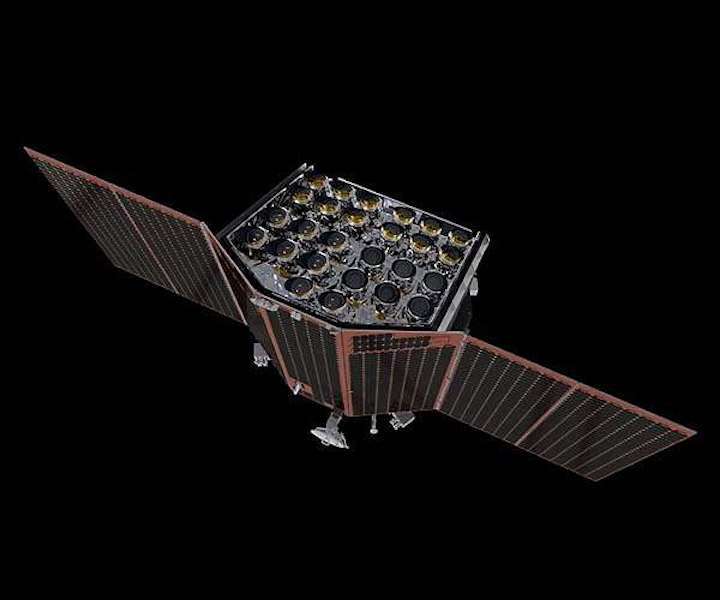
Key technology for ESA's exoplanet-hunting Plato spacecraft has passed a trial by vacuum to prove the mission will work as planned. This test replica of an 80-cm high, 12-cm aperture camera spent 17 days inside a thermal vacuum chamber.
Testing at the ESTEC Test Centre in the Netherlands reproduced the telescope's planned operating environment in deep space, 1.5 million km away from Earth.
"Located at the L2 Lagrange point, Plato ( PLAnetary Transits and Oscillations of stars) will have 26 of these cameras pointing at the same target stars. They will acquire images every 25 seconds - every 2.5 seconds for the two central cameras - for at least two years at a time to detect tiny shifts in brightness caused by exoplanets transiting these stars," explains Yves Levillain, Plato's Instrument System Engineer.
"By observing with so many telescopes at once on a very steady basis we will attain a much higher signal-to-noise ratio than a single large telescope. Each telescope camera will host four CCDs producing 20.3 megapixel images adding up to 81.4 megapixel per normal camera and 2.11 gigapixels for the overall spacecraft - the most pixels ever for a space mission.
"Away from the Sun's brightness we expect to be able to detect the presence of Earth-like exoplanets, where life as we know it might be able to develop, and even to perform stellar seismology, gathering evidence of 'starquakes' in the stars we observe."
But first the team had to know their camera design was sound. The 'Structural and Thermal Model' of the camera, prepared by institutions and companies across Europe, was a near-replica of a flight model, except its lenses were not optically finished.
"We placed the camera in our VTC-1.5 Space Simulator, using liquid nitrogen to keep it around -80 C," says Matteo Appolloni of the ESTEC Test Centre. "First of all the team wanted to be sure that their thermal model was correct - that the camera responded as expected to temperature changes. The other purpose of the testing was to check an innovative temperature-based focusing method."
To reach the high optical precision required, the focal length of each Plato camera will be adjusted through very slight temperature shifts, causing it to expand or shrink. Changing the temperature by just 0.1 C using a trio of camera heaters will adjust its focusing length by 1 micrometre - a thousandth of a millimetre.
The testing was monitored on a 24 hour seven days per week basis by personnel from ESA's Plato mission team, industry representatives and European Test Services - the company that operates the Test Centre for ESA - divided into three shifts daily. To observe COVID-19 protocols they worked apart and wiped down computers and surfaces before shift changes.
"Over the days of the test campaign we were pretty confident of success, because the team has put a lot of work into the technical aspects," adds Yves.
"Our biggest worry was actually due to the pandemic, because if somebody caught COVID-19 then our testing might be disrupted. But now the basic design is validated, we'll proceed to optical testing of engineering models of the camera, as well as data processing checks, then in the summer a full-scale STM of the Plato spacecraft platform minus the cameras will undergo testing here at the ESTEC Test Centre."
Plato is due for launch by Ariane 6 in 2026.
Quelle: SD
----
Update: 16.01.2022
.
Plato exoplanet mission gets green light for next phase
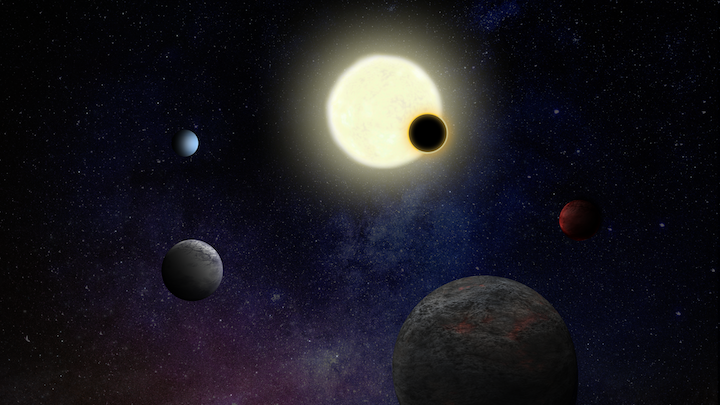
Plato, ESA’s next-generation planet hunting mission, has been given the green light to continue with its development after the critical milestone review concluded successfully on 11 January 2022.
The review verified the maturity of the complete space segment (spacecraft platform and payload module), confirming the solidity of the spacecraft-to-payload interfaces, the payload schedule with particular focus on the series production of the 26 cameras, and the robustness of the spacecraft schedule. Plato will use the 26 cameras to discover and characterise exoplanets that orbit stars similar to our Sun.
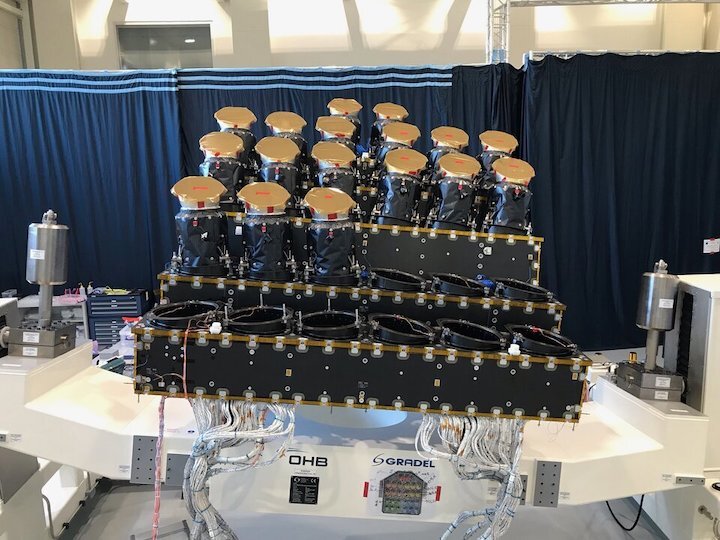
Plato payload module under integration in the cleanroom of OHB System AG
The critical milestone review was established specifically for Plato at the time of mission adoption because of the development risks associated with the series production of the cameras. The review was carried out during the period between July and December 2021. The review teams consisted of more than 100 people from ESA divided into two panels (one for the spacecraft and one for the payload) that submitted their findings to the board.
The review board meeting was held on 11 January 2022. Nearly all aspects of the cameras production, assembly, and testing have been exercised successfully with the tests of structural, engineering and qualification models of the camera units carried out at several European facilities. The thermo-elastic properties of the optical bench, which hosts the cameras, were verified with a novel test technique developed by the spacecraft prime contractor, OHB System AG.
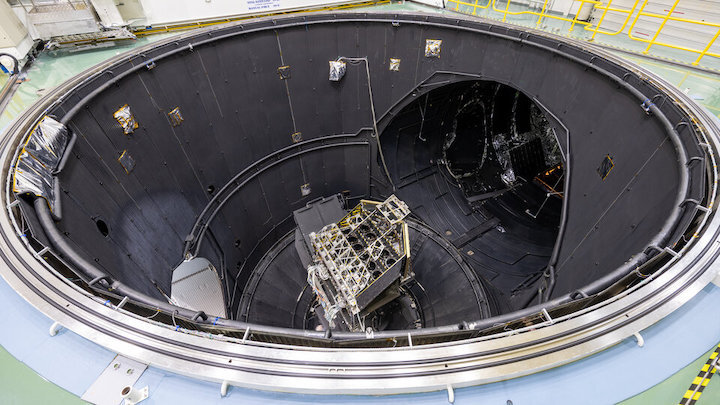
Plato optical bench entering the Large Space Simulator (ESTEC) for the thermos-elastic deformation test (TED).
With the achievement of this milestone, the second phase of the industrial contract, led by OHB System AG as prime contractor with Thales Alenia Space in France and RUAG Space System Switzerland as part of the core team, can start.
The provision of the Plato payload is the responsibility of the European Space Agency in collaboration with a European consortium of institutes and industry, the Plato Mission Consortium (PMC) in accordance with the established Multi-Lateral Agreement (MLA) with the Agency.
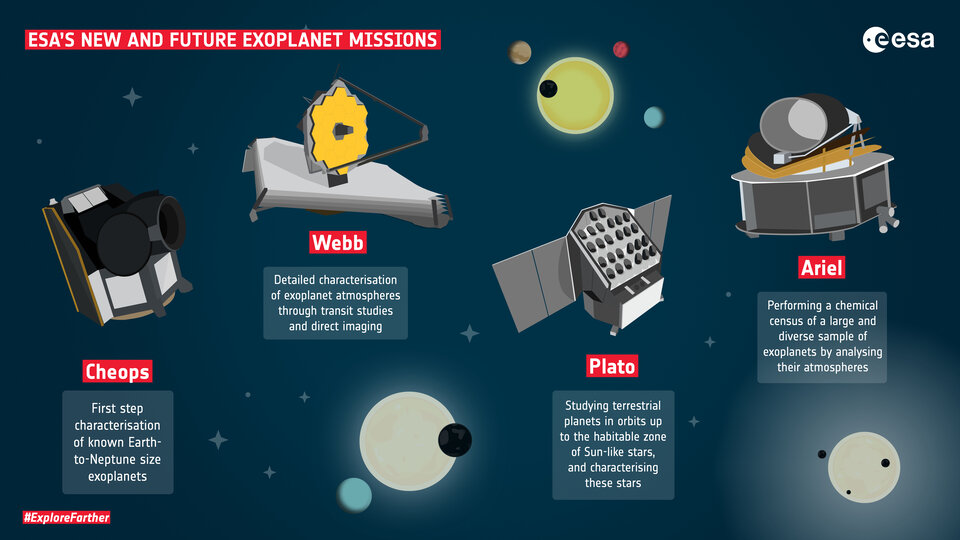
The next major milestone for Plato is the spacecraft critical design review in 2023, which will verify the detailed design of the complete spacecraft before proceeding with its assembly.
“Plato continues a European tradition of excellence in all areas of space science,” said Filippo Marliani, project manager of Plato at ESA. “The mission will serve the science community to gather invaluable knowledge of planets in our galaxy, beyond our own solar system. The successful completion of the critical milestone and the formal start of the second phase of this extraordinary mission constitute an important boost of positive energy for the next challenges to be tackled with our industrial, institutional and academic partners.”
After launch, currently planned for end 2026, Plato will travel to Lagrange point 2 in space, 1.5 million km beyond Earth in the direction away from the Sun. From this point the telescope will observe more than 200 000 stars during its four-year nominal operation, looking for regular dips in their light caused by the transit of a planet across the star’s disc. The analysis of these transits and of the stellar light variations will allow precise determinations of the properties of exoplanets and their host stars.
“After this successful review we can continue the implementation of this exciting mission that will revolutionise our knowledge of exoplanets down to Earth size and open new venues in the study of the evolution of stars,” said Ana Heras, project scientist of Plato at ESA.
Notes for editors
Plato, or PLAnetary Transits and Oscillations of stars, is the third medium-class mission in ESA's Cosmic Vision programme. Its objective is to find and study a large number of extrasolar planetary systems, with emphasis on the properties of terrestrial planets in the habitable zone around solar-like stars. Plato has also been designed to investigate seismic activity in stars, enabling the precise characterisation of the planet host star, including its age.
Quelle: ESA
----
Update: 1.06.2022
.
Plato’s cave: vacuum test for exoplanet detection
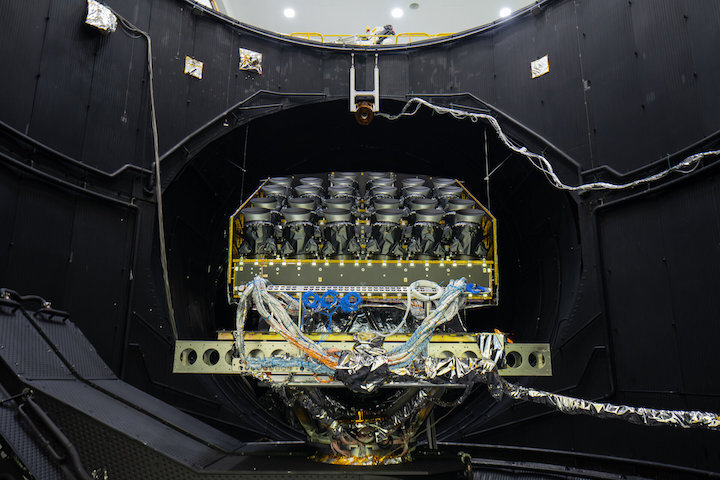
A test version of the payload module of ESA's exoplanet-detecting Plato spacecraft underwent a prolonged vacuum soak within Europe’s largest thermal vacuum chamber, to evaluate its endurance of space conditions.
There are tasks in space where multiple smaller imagers are better than one big equivalent. ESA PLAnetary Transits and Oscillations of stars mission, Plato, is to detect Earth-scale exoplanets using an array of 26 cameras to perform prolonged observations of target stars. This combination of cameras will pick up tiny variations in their light output due to the transit of exoplanets across them.
But in order for the mission to perform as planned, the optical bench securing these cameras in place must maintain a fixed optical-quality rigidity, despite the extreme conditions of deep space, as Plato operates from out at the second Sun-Earth Lagrange point, 1.5 million km from Earth.
So this initial ‘structural and thermal model’ of Plato’s optical bench has been built specifically for testing in space-like conditions. Testing includes ‘thermal cycling’ to assess how the optical bench responds to the in orbit temperature variations, and ‘thermal balance’ to measure the operating temperature that it maintains in these conditions.
Testing took place inside ESA’s Large Space Simulator, the largest thermal vacuum chamber in Europe. Standing 15m high by 10m wide the LSS is cavernous enough to encompass an upturned London double decker bus.
Once the chamber’s top and side hatches are sealed, high-performance pumps create a vacuum a billion times sparser than standard sea-level atmosphere, and this can be held for weeks at a time during test runs. At the same time liquid nitrogen is pumped through the walls to recreate the cold of space in the shade.
The LSS testing began at the end of March and was successfully completed in the third week of May.
This current test campaign has been preceded by environmental testing of the Plato camera design, performed both at ESA’s ESTEC Test Centre in Noordwijk in the Netherlands and at SRON, the Netherlands Institute for Space Research.
For the flight version of Plato, thermal vacuum testing of the 26 cameras required will be divided between SRON in Groningen, IAS in Paris and INTA in Madrid, running this autumn into 2024, to be ready for Plato’s 2026 launch date.
Quelle: ESA
----
Update: 16.07.2023
.
Plato's structural test campaign
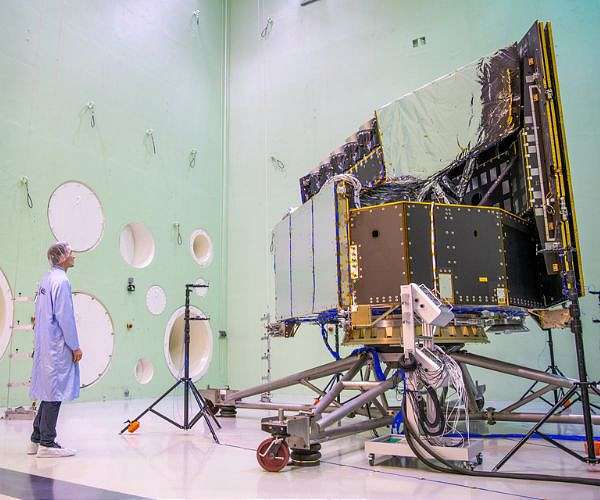
An engineer dressed in a blue lab coat and white hairnet looks upon the Plato's structural model inside the LEAF chamber in ESA's ESTEC Test Centre. Plato is put on top of a structure of four wheels. The LEAF room is green and has one wall with huge white holes in the wall. These holes are noise horns that can produce up to 156 decibels. The satellite is surrounded by microphones on sticks to measure the acoustic environment.
From May to August 2023 a structural model of ESA's next exoplanet mission, Plato, is undergoing a test campaign at ESA's ESTEC Test Centre, at Noordwijk in the Netherlands. Plato is planned to launch on an Ariane 6 in 2026. During lift-off Plato will have to withstand intense vibrations and immense blasts of noise. To make sure the satellite can survive the start of its journey to space, engineers test its structural integrity beforehand.
Structural model
The version of Plato undergoing these tests is not the satellite that will fly in space, but a detailed structural model used for testing the spacecraft during its development. The series of tests evaluate the qualification limits of the satellite structure to check if it can withstand the launcher's loads and minimise the risk to the real satellite.
Importantly, they also verify the interfaces between different parts, such as the sunshield and the satellite's main body, and between Plato's 26 cameras and the optical bench they are mounted on. This campaign was successfully finalised in the beginning of June.
Shake it up
During the first part of the test campaign, Plato's structural model was placed on top of two shakers, the Multi shaker and the QUAD shaker, to simulate the vibrations encountered during launch. The Multi shaker moved Plato in the left-right and forward-backward directions. The QUAD shaker, pictured below, simulated oscillations in the up-down direction. Together the shakers can test spacecraft up to 10 000 kg for vibrations in three dimensions. This series of tests was essential to make sure Plato can survive the first two minutes of launch, during which the most extreme shocks are encountered.
Acoustic tests
After the shaker test, Plato was moved to the Large European Acoustic Facility (LEAF), the green room in the pictures. In this chamber, the noise of a rocket taking off can be simulated. This large space measures 11 by 9 metres and is 16.4-m high.
One wall is equipped with multiple noise horns, that have a similar design as ordinary audio speakers. Nitrogen is shot through the horns and can produce noise up to 156 decibels. Meanwhile Plato itself was ringed by microphones, used to check the acoustic environment surrounding the model. During testing the LEAF's massive door stays shut and no one is allowed into the chamber: it is surrounded by a 0.5-m-thick layer of concrete to keep the noise in. Plato passed its noise test with flying colours.
Next step: testing the flight model
During the next two years, Plato's flight model, which is the real spacecraft that will fly into space, will be completed and tested. The flight model will go through various thermal and mechanical tests to make sure Plato will perform well and meet its scientific requirements.
Quelle: SD
----
Update: 18.06.2024
.
First Camera Integrated for Plato Exoplanet Explorer
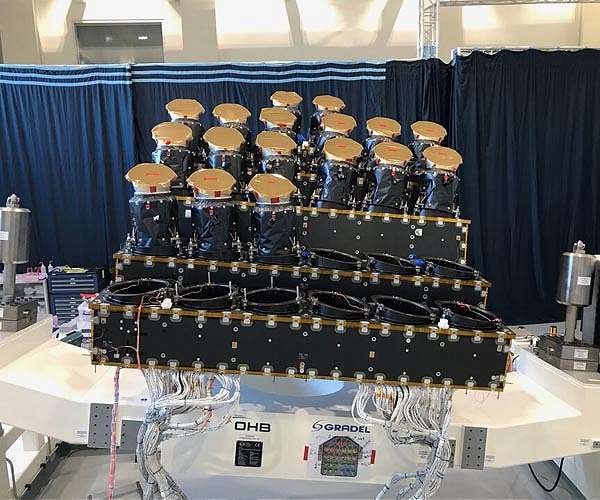
The integration of Plato's cameras has commenced at OHB's Space Centre and Optics facility in Oberpfaffenhofen, Germany. The first of 26 cameras has been successfully attached to Plato's optical bench, ensuring precise alignment for the mission.
"Plato will use 24 'normal' cameras and 2 'fast' cameras to look at more than 100 000 stars and search for planets around them." The mission uses the transit method, where planets passing in front of their host stars cause a dimming of the starlight. This effect helps determine a planet's size, mass, and density.
During the four-year mission, the cameras will utilize a specialized pointing technique to observe the same stars over extended periods. Collectively, the 26 cameras will image about 5% of the sky simultaneously.
Plato's scientific payload, including the cameras and electronic units, is a collaboration between ESA and the Plato Mission Consortium. This Consortium includes various European research centers, institutes, and industries.
Quelle: SD

